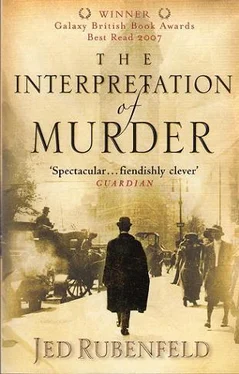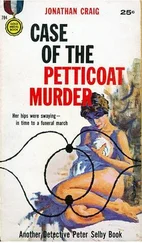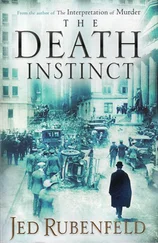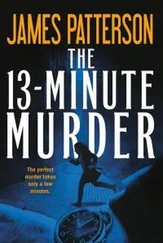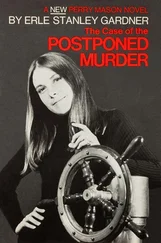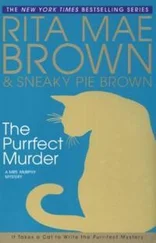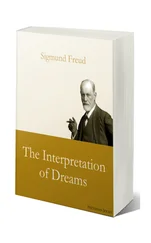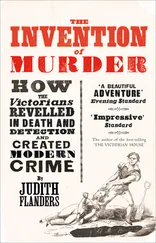Jed Rubenfeld - The Interpretation of Murder
Здесь есть возможность читать онлайн «Jed Rubenfeld - The Interpretation of Murder» весь текст электронной книги совершенно бесплатно (целиком полную версию без сокращений). В некоторых случаях можно слушать аудио, скачать через торрент в формате fb2 и присутствует краткое содержание. Жанр: Исторические приключения, на английском языке. Описание произведения, (предисловие) а так же отзывы посетителей доступны на портале библиотеки ЛибКат.
- Название:The Interpretation of Murder
- Автор:
- Жанр:
- Год:неизвестен
- ISBN:нет данных
- Рейтинг книги:5 / 5. Голосов: 1
-
Избранное:Добавить в избранное
- Отзывы:
-
Ваша оценка:
- 100
- 1
- 2
- 3
- 4
- 5
The Interpretation of Murder: краткое содержание, описание и аннотация
Предлагаем к чтению аннотацию, описание, краткое содержание или предисловие (зависит от того, что написал сам автор книги «The Interpretation of Murder»). Если вы не нашли необходимую информацию о книге — напишите в комментариях, мы постараемся отыскать её.
The Interpretation of Murder — читать онлайн бесплатно полную книгу (весь текст) целиком
Ниже представлен текст книги, разбитый по страницам. Система сохранения места последней прочитанной страницы, позволяет с удобством читать онлайн бесплатно книгу «The Interpretation of Murder», без необходимости каждый раз заново искать на чём Вы остановились. Поставьте закладку, и сможете в любой момент перейти на страницу, на которой закончили чтение.
Интервал:
Закладка:
By the turn of the century, New York society had been transformed from Knickerbocker bastion into a volatile amalgam of power, money, and celebrity. Anyone worth a hundred million could buy his way in. Society gentlemen mixed with showgirls. Society ladies left their husbands. Even Mrs Vanderbilt was Mrs Vanderbilt no longer: she had obtained a shocking divorce in 1895 in order to become Mrs Oliver H. P. Belmont. Mrs Astor's own daughter Charlotte, the mother of four children, ran away to England with another man. Three sons and one grandson of the multimillionaire Jay Gould took actresses for wives. James Roosevelt Roosevelt married a prostitute. Even the occasional murderer could be lionized, provided he was of the right breed. Harry Thaw, heir though he was to a modest
Pittsburgh mining fortune, would never have achieved celebrity in New York had he not killed the renowned architect Stanford White on the rooftop of Madison Square Garden in 1906. Although Thaw shot the seated White full in the face in plain view of a hundred diners, a jury acquitted him — by reason of insanity — two years later. Some observers said that no American jury would convict a man for murdering the scoundrel who had bedded his wife, although, to be fair to White, his liaison with the young lady in question occurred when she was only a sixteen-year-old unmarried showgirl rather than the respectable Mrs Harry Thaw. Others opined that this jury was especially disinclined to convict, having received too great a sum from Thaw's attorney to feel free, in conscience, to reject his closing plea.
In the summers, Manhattan's rich repaired to marble palaces in Newport and Saratoga, where yachting, horsing, and cardplaying were the principal occupations. In those days, the leading families could still demonstrate why they were their country's finest. Young Harold Vanderbilt, who grew up at 660 Fifth Avenue, would successfully defend the America's Cup three times against British assault. He also invented contract bridge.
As September approached in 1909, a new season was about to begin. Everyone agreed that the crop of debutantes that year was among the choicest in recent memory. Miss Josephine Crosby, the Times observed, was a particularly handsome girl, gifted with a beautiful singing voice. The shapely Miss Mildred Carter had returned with her father from London, where she had danced with the king. Miss Hyde, the heiress, was also to debut, as were Miss Chapin and Miss Rutherford, who was last seen as a bridesmaid to her cousin, the former Miss White, at the latter's marriage to Count Sheer-Thoss.
The inaugural event of the season was a charitable ball, thrown by Mrs Stuyvesant Fish on Monday night, August 30, to raise funds for the city's new Free Hospital for Children. It had become fashionable at that time to hold parties at the city's grand hotels. Mrs Fish's party was to take place at the Waldorf-Astoria.
That grand hotel on Fifth Avenue and Thirty-fourth Street stood on the spot where Mrs Astor had lived a quarter century earlier, when she was bested by Mrs Vanderbilt. By comparison with the gleaming Vanderbilt mansion, the Astors' fine old brick townhouse had suddenly looked small and drab. Therefore Mrs Astor unceremoniously razed it and built herself a double-sized French chateau — not in the Loire style but in the more dignified Second Empire fashion — thirty blocks north, with a ballroom big enough for twelve hundred. On the land vacated by Mrs Astor, her son erected the world's largest and the city's most luxurious hotel.
Society entered the Waldorf-Astoria through a wide, three-hundred-foot-long corridor off Thirty-fourth Street, known as Peacock Alley. On the occasion of a fancy ball, blue-stockinged doormen would greet the carriages as they drew up, and Peacock Alley would be lined with hundreds and hundreds of spectators, an audience of groundlings for the procession of wealth and importance making its stately way inside. The Palm Garden was the Waldorf's massive domed and gilded restaurant, walled in glass to ensure continuing visibility to the outside world and paneled everywhere with full-length mirrors to ensure that the ladies and gentlemen of the inner world saw even more of themselves than outsiders could. To accommodate her party, Mrs Stuyvesant Fish had booked not only the Palm Garden but also the Empire Room, the outdoor Myrtle Room, and the entire orchestra and company of the Metropolitan Opera.
It was the strains of this music that greeted Stratham Younger as he strolled the length of Peacock Alley, his arm in the grasp of his cousin Miss Belva Dula, a half hour after his European guests had departed for their dinner at the Brills'.
My mother was a Schermerhorn. Her sister married a Fish. These two majestic genealogical facts got me invited to every royal ball in Manhattan.
Living in Worcester, Massachusetts, supplied an excuse sufficient to dodge most of these engagements. But I had to make an exception for parties thrown by my outre Aunt Mamie — Mrs Stuyvesant Fish — who, though not really my aunt, has insisted on my calling her so since I was little, when I used to spend summers in her Newport house. After my father died, it was Aunt Mamie who made sure my mother was comfortable and did not have to vacate the Back Bay house where she had lived throughout her marriage. As a result, I could never say no when Aunt Mamie asked me to one of her galas. On top of this obligation, there was also cousin Belva, whom I had agreed to escort down the alley.
'What is that again?' Belva asked me, referring to the music, as we made our way down the endless hallway with throngs of onlookers on either side of us.
'It is Mr Verdi's Aida,' I answered, 'and we are the marching animals.'
She pointed to a rotund woman escorted by her husband not far ahead of us. 'Oh, look, the Arthur Scott Burdens. I have never seen Mrs Burden in a huge crimson turban before. Perhaps we are meant to think of elephants.'
'Belva.'
'And there are the Conde Nasts. Her Directoire hat is much more suitable, don't you think? Her gardenias I approve as well, but I'm less sure about the ostrich feathers. It may incline people to bury their heads in the sand when she passes.'
'Heel, Belva.'
'Do you realize there must be a thousand people watching us right now?' Belva was manifestly relishing the attention. 'I'll bet you have nothing like this in Boston.'
'We are sadly behind in Boston,' I said.
'The one with the perfect mass of jewels in her hair is the Baroness von Haefton, who excluded me from her party last winter for the Marquis de Charette. Those are the John Jacob Astors — they say he's been seen everywhere with Maddie Forge, who is not a day older than sixteen — and our hosts, the Stuyvesant Fishes.'
'Fish.'
'I beg your pardon?'
'The plural of Stuyvesant Fish,' I explained, 'is Stuyvesant Fish. One says "the Fish," not "the Fishes." It was rare that I could even pretend to correct Belva on a point of New York etiquette.
'I don't believe that for a moment,' she replied. 'However, Mrs Fish is looking almost plural herself this evening.'
'Not a word against my aunt, Belva.' Cousin Belva was my age almost exactly, and I had known her since infancy. But the poor, scrawny, ungainly thing had come out almost ten years ago, and no one had taken the bait. At twenty- seven, she was, I'm afraid, quite desperate, the world already consigning her to spinsterhood. 'At least,' I added, 'Aunt Mamie hasn't brought her dog tonight.'
Aunt Mamie had once thrown a ball in Newport for a new French poodle, which made its entrance prancing down a red carpet in a diamond-encrusted collar.
'But look, she has brought her dog,' replied Belva pleasantly, 'and still wearing the diamond collar.' Belva was pointing to Marion Fish, Aunt Mamie's youngest daughter, to whose stunning debut Belva had not been invited.
Читать дальшеИнтервал:
Закладка:
Похожие книги на «The Interpretation of Murder»
Представляем Вашему вниманию похожие книги на «The Interpretation of Murder» списком для выбора. Мы отобрали схожую по названию и смыслу литературу в надежде предоставить читателям больше вариантов отыскать новые, интересные, ещё непрочитанные произведения.
Обсуждение, отзывы о книге «The Interpretation of Murder» и просто собственные мнения читателей. Оставьте ваши комментарии, напишите, что Вы думаете о произведении, его смысле или главных героях. Укажите что конкретно понравилось, а что нет, и почему Вы так считаете.
